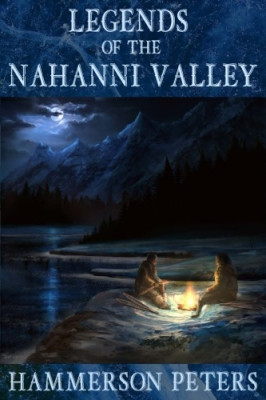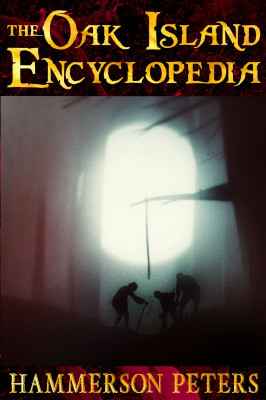Back to The Adventures of Paul Kane: Part 3.
The Adventures of Paul Kane: Part 4
The Red River
On June 4th, the brigade reached Fort Frances, an old French-turned-HBC fur trading post situated at the confluence of Rainy River and Rainy Lake, which had been renamed in honour of George Simpson’s wife in 1830. After drawing the portaits of several Saulteaux Indians, Kane followed the brigade through a deciduous forest, the leaves of which were eaten away by caterpillars, leaving “the whole country wearing the dreary aspect of winter at the commencement of summer.” They crossed the Lake of the Woods beyond, and tracked and portaged their way to Fort Alexander, a French-turned-NWC-turned-HBC trading post located on the Winnipeg River about three miles from its junction with Lake Winnipeg. There, Paul Kane parted ways with the fur brigade, which would continue on to Norway House north of Lake Winnipeg.

Kane learned that a band of Saulteaux Indians was encamped nearby and made his way over to their camp. He presented himself at the camp’s medicine lodge, where he accidentally interrupted some strange ceremony revolving around some mysterious covered object which lay on the floor at the centre of the structure. Shortly thereafter, he hired six Indian guides and asked them to take him to the Selkirk Colony on the shores of the Red River.
Accompanied by Mr. Setler, the factor of Fort Alexander, Kane and his guides paddled along the southern shores of the Winnipeg River and reached the mouth of the Red River two days later. They continued up the Red River where, about twenty miles from its mouth, they reached Lower Fort Garry, which Kane referred to as the “Stone Fort”. There, the artist and his crew encountered Sir George Simpson and other Company men, who were engaged in an annual business meeting.
Kane and his crew proceeded upriver on horseback, passing through the Selkirk Settlement and reaching Upper Fort Garry later that day. The artist hoped to sketch a Metis buffalo hunt (the Metis being a nation born from marriages between French-Canadian voyageurs and native women), and when he learned that a Metis band had set out on a hunting trip two days prior, he rented a Red River cart, hired a local guide, and followed the band’s trail over the Manitoba prairies.

Kane and his new companion overtook the Metis band the following day and found them in a copse cutting wood. The artist learned that the wooden poles would be hauled over the treeless prairie to the hunting grounds, where they would be used to make racks on which to dry buffalo meat. Once thoroughly dry, the meat would be dried, pulverized with rocks, and mixed with rendered buffalo fat to create pemmican- a nutritious food invented by the natives of the plains, which the Hudson’s Bay Company purchased from the Red River Metis in huge quantities every year for the purpose of provisioning their voyageurs.
Kane fell in with the Metis band and followed the halfbreeds out onto the open prairie. During their journey, they were approached by a handful of Sioux chiefs, with whose nation the Metis were at war. While the Metis leaders smoked the pipe of peace with the Sioux chiefs, a lone Metis hunter who had wandered from the camp was killed and scalped by an unknown assailant. The young Metis braves, suspecting that the Sioux had a hand in their friend and relative’s death, would have murdered the Sioux chiefs were it not for the intercession of the more coolheaded Metis elders. In accordance with the laws of Metis hospitality, the elders escorted the Sioux safely from their camp, but warned them that there could be no peace between their nations until their friend’s murder was avenged.
Three days after the departure of the Sioux chiefs, the Metis encountered a small Sioux war party. The Metis warriors lured these braves into an ambush and killed eight of them without suffering any casualties themselves. Although the Metis did not scalp the fallen braves, a small number of Saulteaux who accompanied the halfbreeds indulged their hatred of the Sioux by mutilating the bodies.
The following afternoon, the band came upon a small herd of buffalo cows. Metis hunters rode after the animals and brought down many in the ensuing hunt, shooting them from horseback with their muskets.

Several days later, the Metis came upon a much larger herd of buffalo, this one composed entirely of bulls, and allowed Kane to participate in the hunt. After adjusting their saddles and loading their muskets, the hunters trotted up to the herd. When their prey took flight, the hunters spurred their mounts to a full gallop and rode amidst the fleeing bison.
“The scene now became one of intense excitement,” Kane wrote, “the huge bulls thundering over the plain in headlong confusion, whilst the fearless hunters rode recklessly in their midst, keeping up an incessant fire at but a few yards’ distance from their victims. Upon the fall of each buffalo, the successful hunter merely threw some article of his apparel- often carried by him solely for that purpose- to denote his own prey, and then rushed on to another. These marks are scarcely ever disputed, but should a doubt arise as to the ownership, the carcass is equally divided among the claimants.”
During the hunt, Kane’s own horse was frightened by a buffalo bull and leapt sideways in an effort to avoid it. During the process, it stepped in a badger hole, and Kane was hurled bodily from the saddle. Fortunately, he was unharmed, unlike some of the Metis hunters who had similarly lost their mounts and been knocked unconscious in the ensuing tumble.

Kane regained his mount, resumed the hunt, and managed to bring down his own buffalo bull with one shot. Shortly thereafter, he shot another bull but failed to kill it instantly. After narrowly avoiding a goring, he shot the animal again, mortally wounding it. The buffalo remained on its feet long enough for Kane to dismount and make a sketch of it.

Following the hunt and the processing operation that took place the following day, Kane decided to the Red River with his guide, who was suffering from the measles. On the way, the two men were obliged to spend a thoroughly miserable night in the middle of a marsh called Swampy Lake, the guide being unable to proceed any further that night on account of his condition. The next day, the guide declared that he felt much better, and encouraged Kane to proceed on horse without him, leaving him to manage the slower horse-drawn Red River cart. Shortly after parting with his guide, Kane and his horse nearly drowned in quicksand, and the artist was only able to liberate his animal from the morass through the use of his lasso. He subsequently became lost, and only managed to find his way back to the settlement after stumbling upon the Assiniboine River, which he followed to its confluence with the Red. Upon reaching Fort Gary, Kane learned that his guide had been found half-dead by Metis hunters and brought back to the settlement, his condition apparently having deteriorated rapidly following their separation. The guide died two days later.
Continued in The Adventures of Paul Kane: Part 5.
















Leave a Reply